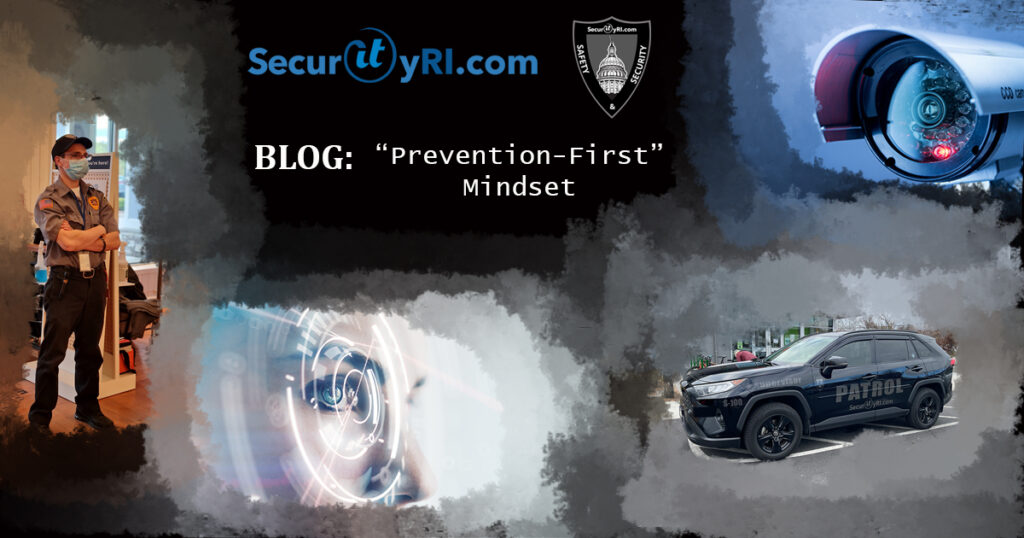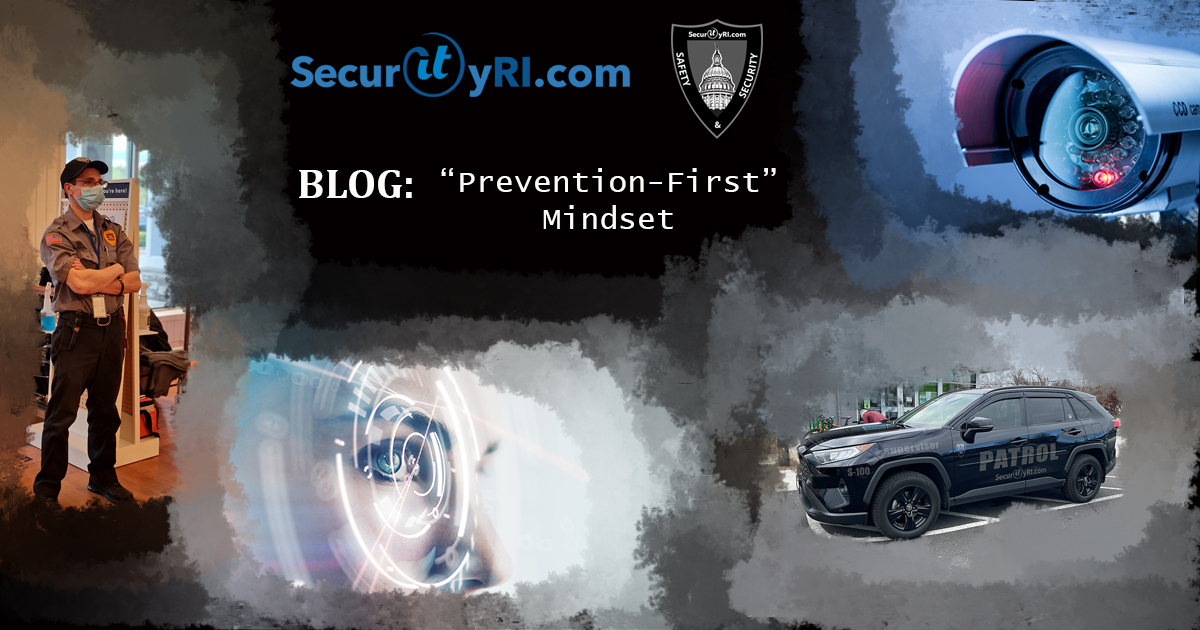When it comes to security, you must form a “Prevention-First Mindset.” Many companies have this approach backward – they deal with security after the breach, damage, or customer complaints.
In business, we understand company image is everything. The impression individuals form of your business depends on a range of factors—branding, personal interactions, presence, and most of all, “reputation.”
Therefore, robust security prevention and presence can continue your positive ongoing business image.
Question: Why does my business need security? Incidents at my location never happen?
Answer: Crimes are rising, year after year, and brings us to our point of “preventative” measures. Innovative companies invest in their marketing, growth, customer service, etc. They also understand the peace of mind insurance of having security rolled into their operations. Security comes in many forms – from physical security officers, mobile patrols, surveillance cameras, cyber security, and the list continues.
Supportive data for your awareness:
The Federal Bureau of Investigation (FBI) released detailed data on nearly 8.9 million criminal offenses reported via the National Incident-Based Reporting System (NIBRS) in 2020. The Uniform Crime Reporting (UCR) Program’s latest report, NIBRS, 2020, presents data about 23 offense categories comprised of 52 offenses. It also presents arrest data for those crimes and ten additional categories for which only arrest data is collected.
Highlights of NIBRS, 2020
In 2020, 9,880 law enforcement agencies, whose jurisdictions covered more than 177.5 million U.S. inhabitants, submitted NIBRS data to the UCR Program. These agencies accounted for 62.1% of the 15,901 law enforcement agencies that submitted data to the UCR Program in 2020. Currently, the FBI does not estimate NIBRS data for agencies that do not submit it. Of the 8,879,728 offenses reported in 7,560,867 incidents, 60.5% were crimes against property, 25.2% were crimes against persons, and 14.3% were crimes against society. (Due to rounding, some percentage breakdowns may not add to 100%.) Among these categories, the offenses most reported include larceny/theft offenses, assault offenses, and drug/narcotic offenses, respectively.
Read the full NIBRS, 2020 report.

Where do I begin with a preventative approach?
You start with sealing the perimeter – by focusing on prevention. If securing with a physical security officer, you want a security team that provides a security presence, understands proper escalation processes and formal reporting; therefore, the client is always aware of their location’s situation.
Surveillance cameras: you or your service provider want to receive an alert before a crime has begun. High-end Artificial Intelligence (AI) surveillance cameras can distinguish and alert a breach by a human the minute they trigger the camera’s built-in protocols. Alerts are sent to the monitor, reacting and beginning the preventive phase.
Cyber security: Detection-based tools, on their own, can’t provide the level of protection needed to keep an organization secure. On average, most threats go undetected for upward of 100 days. Because detection-based tools rely on signatures, threats that have yet to be seen readily slip through traditional defenses. A staggering 360,000 new malicious files are detected every day. Breaches will remain a daily occurrence until cybersecurity tools can block new threats as quickly as they evolve.
Above are just a few examples of preventive security measures and scratching the surface on how intelligent and effective they can be for an individual, business, or property.
For additional information please feel to contact any of our security specialists, we’d be happy to assist.
Stay Safe,
SecurityRI


